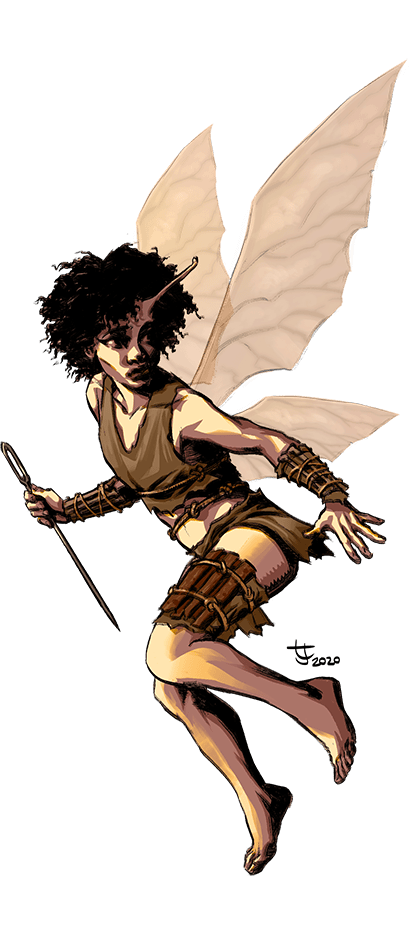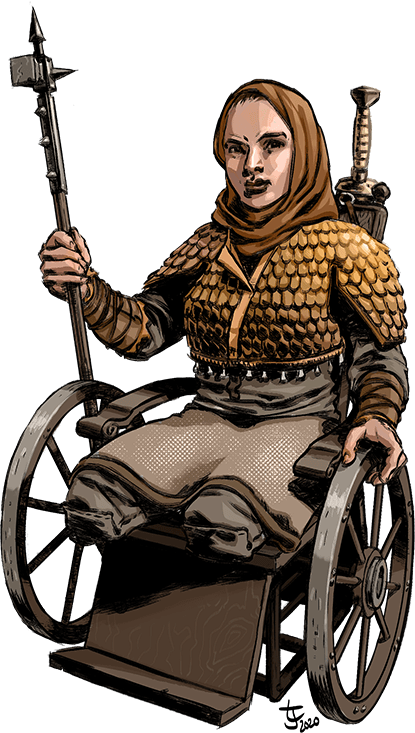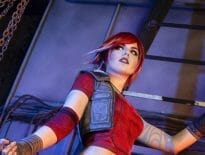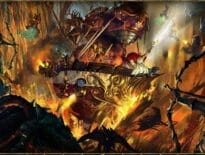Legendlore is a series of fantasy comics from Caliber in which four teenagers find themselves transported into a fantasy world. This year, Onyx Path Publishing’s first attempt to Kickstart the 5e-powered RPG for the series was aborted as COVID-19 smashed its way through finances. The relaunch just happened, and you can check out the campaign today.
Since Geek Native and Legendlore RPG designer Steffie de Vaan talked about the return of the campaign, it was delayed again in support of #BlackOutTuesday. Please be aware that some of the topics we discuss have now become especially sensitive, politically hot and remain very important.
Contrast is one of the things that makes the Legendlore comic book series work. We get to see how different the fantasy world is from 90s America, where the teenagers come from.
As it happens, 90s America is an entirely different century, and the world today is very different from it was back then. In ’92, Tennesse and Kentucky voted Democrat (for Bill Clinton), the iPhone was a sci-fi concept, and Google hadn’t even be launched (1998). It was the era of Advanced Dungeons & Dragons 2e.
In some ways, the contrast between then and now is nearly as stark as the fantasy and reality juxtaposition of Legendlore.
The differences between the cultures of AD&D and D&D 5e are non-trivial too. For a start, you can get D&D’s Basic Rules for free and perfectly legally. In those basic rules, you’ll find permission to play characters outside a binary notion of gender. Elves are canonically androgynous or hermaphroditic, and the game’s text works hard to put all options on the table;
You could also play a female character who presents herself as a man, a man who feels trapped in a female body, or a bearded female dwarf who hates being mistaken for a male. Likewise, your character’s sexual orientation is for you to decide.
But is it enough? A reoccurring debate among D&D tabletop gamers is whether the rules are wrong to present some races as genetically evil or primitive. Are all orcs evil? Even babies? Even orcs who have never met a single human before?
It’s a debate. And it’s a debate that Legendlore finds itself right in the middle of. Why? Legendlore, like some aspects of D&D, is a reflection of the past times it was written in.
In Legendlore, the two young women in the group of four who travel to the fantasy world are soon kidnapped and become damsels in distress. The men must be manly and enact a rescue, and that’s a task they set about while hurling the world “queer” at the dastardly villain as an insult.
Geek Native spoke to the Legendlore RPG writer Steffie de Vaan in 2019, and we know Onyx Path, with Caliber Comics’ backing, has made updates to make the setting more inclusive.
Back then, Steffie told us;
In the comics Dominic calls Darkoth, the big bad of the setting, a “queer” as an insult. We decided Dom says that out of his own Earth-born bigotry. The people of the Realm don’t care how Darkoth expresses their gender – but they do care that Darkoth tries to subjugate the other nations. We’re also adding heroic queer characters to counter the presence of a queer villain.
In light of recent debates about whether there’s inherent racism in races in D&D and the return of the Legendlore Kickstarter, I wondered whether the very deliberate effort to bring Legendlore up to date with the values of many year 2020 players would give us a good idea of where D&D itself might be doing.
I reached out to Steffie de Vaan again, and once more, she agreed to talk to Geek Native.
Is the Legendlore RPG setting out to be thoughtful and inclusive?
Definitely! That was basically the second thing on our design list (the first was “based on the Realm and Legendlore comics”). The premise of Legendlore is that you play yourself—so Steffie the human writers becomes Steffie the hairfoot bard, but I’m still me. That means the game needs to welcome people from all backgrounds, specifically BIPoC and queer people who are still underrepresented in roleplaying games, or they won’t have fun playing themselves. So the people in Legendlore come in all skin colors, genders, and orientations.
Earlier in this piece, I talk about the reoccurring debates about how D&D treats orcs or other so-called evil races. Do you think it’s a problem?
I do. We’re seeing progress, but sometimes it feels like we’re going back and forth. The 5E Core was off to a good start, but then later releases fell into old stereotypes again. We’re neither where I’d like us to be, nor where we should be in 2020. But maybe Legendlore can get us a bit closer.

How do you handle races in Legendlore?
We started by saying none of them are born good or evil. If any of them trend that way—the goblins are admittedly more hostile—it’s because of circumstances. The goblins, for example, live in a nation ruled by an evil overlord who actively recruits and subverts them. That’s not on them, and you might even say it’s on the “good nations” for letting that happen.
We also decided to go with cultural bonusses rather than racial bonusses—our trolls tend to be good at haggling because many of them are merchants. But if you’re a troll who was raised by elves (adoption is officially something that happens in the Realm) you can take the elven bonus instead. You can also forego cultural bonusses entirely—you’re a troll raised by trolls, but you just have no proclivity towards trade—and choose a class bonus instead.
That’s not to say the Realm is completely free of prejudice, but we made sure those are in-character rather than out-of-character. So all people come in all genders, colors, and orientations. No one will bat an eyelid if you’re a black poly-amorous elven trans woman. But they might care that you’re an orc, because historically there’s been some conflicts between orcs and other people. We made sure that was an in-world conflict, rather than rooted in out-of-character stereotypes.
One thing I should also mention, on the topic of orcs (and minotaurs) is that the comics clearly have them as pig-people (and cow-people). Which allowed us to drop all those colonialist and racist stereotypes we so often encounter in fantasy races, and just go for “what would a society of sentient bipedal pigs look like.” Then we combined that with the orcs’ history to get them to “they want their land back” and from there we developed two groups—one who’s pushing for another war to reclaim what they lost, and a second who’s trying diplomacy for recognition of their sovereignty. That diplomatic push is part of the convention adventure I run, and so far all players have been firmly in support of the orcs which is exactly what we want. Because if they ever meet the militant orcs later, the characters will know “oh, you actually have a fairly good reason for being pissed.”
R Talsorian Games’ writer Sara Thompson tweeted in April to complain about how WotC treated a disabled character in Curse of Strahd. Chris Perkins, of WotC, responded by promising to fix it. Do you think that WotC generally is pushing in the right direction?
I have not played Curse of Strahd because I don’t like that character, so I can’t speak to that supplement directly. In general though, I think they are aiming for the right direction, but not always getting there.
In Legendlore, you play as yourself and someone from the 2020s. The character you can create is based on you except you, like the comic book heroes, have also been transported to a fantasy world but changed too.
Once again, we touched on this in the 2019 piece, when I asked Steffie about the character she might end up playing.
I have bad eyes, but I can always see clearly in my dreams – so let’s say Legendlore me has good eyesight. I’d probably still have allergies, which is gonna suck running around in any kind of forest or grassy plain. My first adventure would probably be finding antihistamin, but luckily the nation Ardonia has excellent science and medicine.
Has the topic of disability versus heroic ability been a thorny one for Legendlore?
We had to address it of course, as part of playing yourself, but we quickly realized that there was no one-fit solution. One person in a wheelchair might feel that’s just part of them, while another might view it as something put upon them. Given that, we opted for letting the player choose what they keep and drop as they Cross into the Realm. We also give players agency over handling any disabilities in-game. Going back to the wheelchair example, a player might actually enjoy roleplaying the difficulties of navigating a forest with thick undergrowth in a wheelchair, while another wants a flying steampunk wheelchair so they don’t have to worry about terrain. The player chooses, and the GM’s job is to facilitate.

Legendlore has rules for flying steampunk wheelchairs? Or, at least, enough support for DMs to figure out how to include them in their game?
It doesn’t, though now I really wish we had a flying steampunk wheelchair in the Magic Items and Strange Things section. Maybe we can work it in as a stretch goal. We do actually have a reason why we didn’t include it. If I give you fixed rules for a flying wheelchair, what it can and can’t do, its movement speed, if it needs recharging, etc, then that’s what everyone gets. And that’s not what we want. Our rule is: the player at the table tells the GM what exactly they do and don’t want, and the GM needs to make that happen. So we actually didn’t want to lock anything down, because then people focus on the details instead of on “your player will TELL YOU.”
You’ve told us how orcs have become pig-people, and I imagine that helps with the Legendlore aesthetics as well as helping avoid those colonial stereotypes. Are there any other proactive changes you’ve made?
After that it was mostly a matter of checking in if we were still doing what we intended, and not subconsciously sliding back. The orcs, going back to that example, have a bit of a land situation going on—other people are living on their land, and they’d like it back. Which is something we see a lot with indigenous people on Earth. So then we had to explore that in a way that was honest and decolonialized. But that was more things we discovered along the way, rather than a proactive change.
The premise of this article is that the ‘sensitivity’ (for want of a better word) upgrade that might have been desirable for Legendlore could give us a clue at the future direction of D&D. I appreciate you don’t have a crystal ball to see the future but does that sound plausible to you?
I hope so! We do see more games replacing “gender” with “pronouns,” or “race” with “culture.” There’s a lot of creators out there using their own experiences to create D&D content, and these people are increasingly diverse. Likewise our players are increasingly diverse and opting to buy diverse products. So we’ll get there, it’s just taking some time.
Hasbro’s London Toy Fair presentation this year was pretty explicit. They say the future of D&D is digital. That’s a hard arena for any other RPG publisher to compete in, but we’ve certainly seen the likes of Andrew McMeel Publishing / Zweihander signal that they’re ready to invest and support actual play streams and influencers. Do you think the future of RPG is to get a bit more digital? Are there plans for any online boosts for Legendlore?
Less of a boost and more of a different online thing, but I think that’s a still secret stretch goal. Soooo can’t tell ya. If everyone goes and back the Kickstarter though, all shall be revealed.
Can you make this article better? If you have inside knowledge or a unique perspective please share in the comments below.

